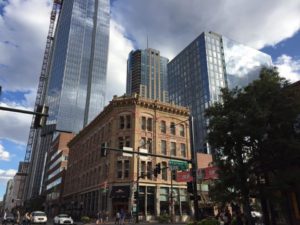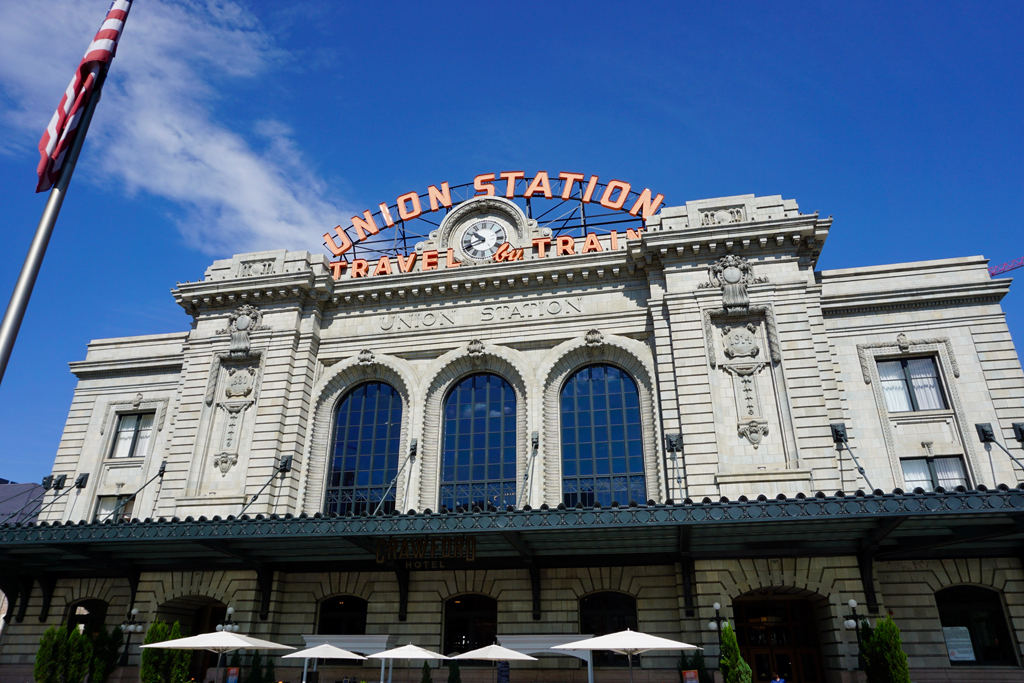 Denver, CO — When it comes to neighborhood development, preserving history and embracing modernity can seem like contradictions. Some critics believe that the preservation mentality can be anachronistic for cities, since areas dominated by such policies often remain low-rise, poorly-adapted to modern economic functions, and worst of all, short on affordable housing. For preservation advocates, meanwhile, placing new buildings into older contexts is the real problem, since those buildings are often large, bulky and oriented towards automobiles. To them, a cross-generational mix of architecture is aesthetically awkward. But one urban American neighborhood shows how the two can compliment each other, creating the broader effect of economic prosperity. This neighborhood is downtown Denver, particularly the “lower downtown” area known colloquially as LoDo.
Denver, CO — When it comes to neighborhood development, preserving history and embracing modernity can seem like contradictions. Some critics believe that the preservation mentality can be anachronistic for cities, since areas dominated by such policies often remain low-rise, poorly-adapted to modern economic functions, and worst of all, short on affordable housing. For preservation advocates, meanwhile, placing new buildings into older contexts is the real problem, since those buildings are often large, bulky and oriented towards automobiles. To them, a cross-generational mix of architecture is aesthetically awkward. But one urban American neighborhood shows how the two can compliment each other, creating the broader effect of economic prosperity. This neighborhood is downtown Denver, particularly the “lower downtown” area known colloquially as LoDo.
Downtown Denver grew in the latter half of the 19th century as an industrial city, smelting the gold and silver that was mined from nearby mountains. This meant that its dominant architectural motif in that early period was mid-rise brick buildings that often had storefronts at ground level.
As the city’s economy evolved from manufacturing to professional services in the 2oth century, these warehouses became viewed as antiquated, and their occupation of downtown land an inhibitor to progress. Many had also fallen into disrepair, with Larimer Street, for example, becoming a skid row defined by crime and prostitution.
For these reasons, the city establishment advanced a downtown urban renewal scheme in the late 1960s, demolishing many of these warehouses, and replacing them with office towers that encompass the city’s current skyline.
Nonetheless, downtown Denver is touted today for its historic downtown. So what happened in between the urban renewal era and now?
There were two macro events. The first was the rise of Denver developer Dana Crawford. In the 1960s, as the city was razing away its history, Crawford bought an entire block along Larimer Street, and convinced the city to save it from the wrecking ball. She then converted it into Larimer Square, an 18-building stretch of historic retail that has evolved into one of Denver’s top tourist destinations.
The second step came in the late 1980s, after Denver already had Larimer Square as a reference point to see how successful historic preservation could be. The city made LoDo, which was its last significant stretch of historic warehouses, into a designated preservation area. This involved different policies — a merchant’s alliance formed to do advocacy; historically-sensitive aesthetic requirements were enforced on buildings old and new; and historic tax credits incentived landlords to do renovations. Such policies, wrote Ed McMahon, a senior fellow for the Urban Land Institute, created a bubble of stability around properties that at the time were still considered fragile investments by the private sector.
How did historic district zoning contribute to LoDo’s success? The answer is simple: scarcity and certainty create value in real estate. Historic buildings are a scarce resource; we are not building any more of them. Small businesses and investors were lured to the area by its charm and unique character—and by the knowledge that those attributes would not change. Historic district zoning gave investors assurance that if they spent money rehabilitating a turn-of-the-20th-century building, their investment would not be undermined by the property owner next door tearing down a building to construct a parking lot, put up a billboard, or pursue other insensitive development.
There was also a public-private, as well as a fully private, component to LoDo’s rise. The city contracted different developers, namely Crawford, to restore key buildings, such as The Oxford Hotel and Union Station. There were also countless small business owners, including current governor John Hickenlooper, who still owns Wynkoop Brewery.
What also helped was Denver’s tolerance, over these three decades, of new housing construction in the general area. Since 2011, nearly 13,000 residential units have been added to downtown, and the population is up to 73,000. The construction within the 23-square-block neighborhood must, to McMahon’s point, fit a restrictive height limit and aesthetic. But the surrounding development looks new, and is much denser. This includes not only in downtown, but across the South Platte River from LoDo into Highland Park, where various mid-rise condos are being built.
Scott Beyer, contributor

